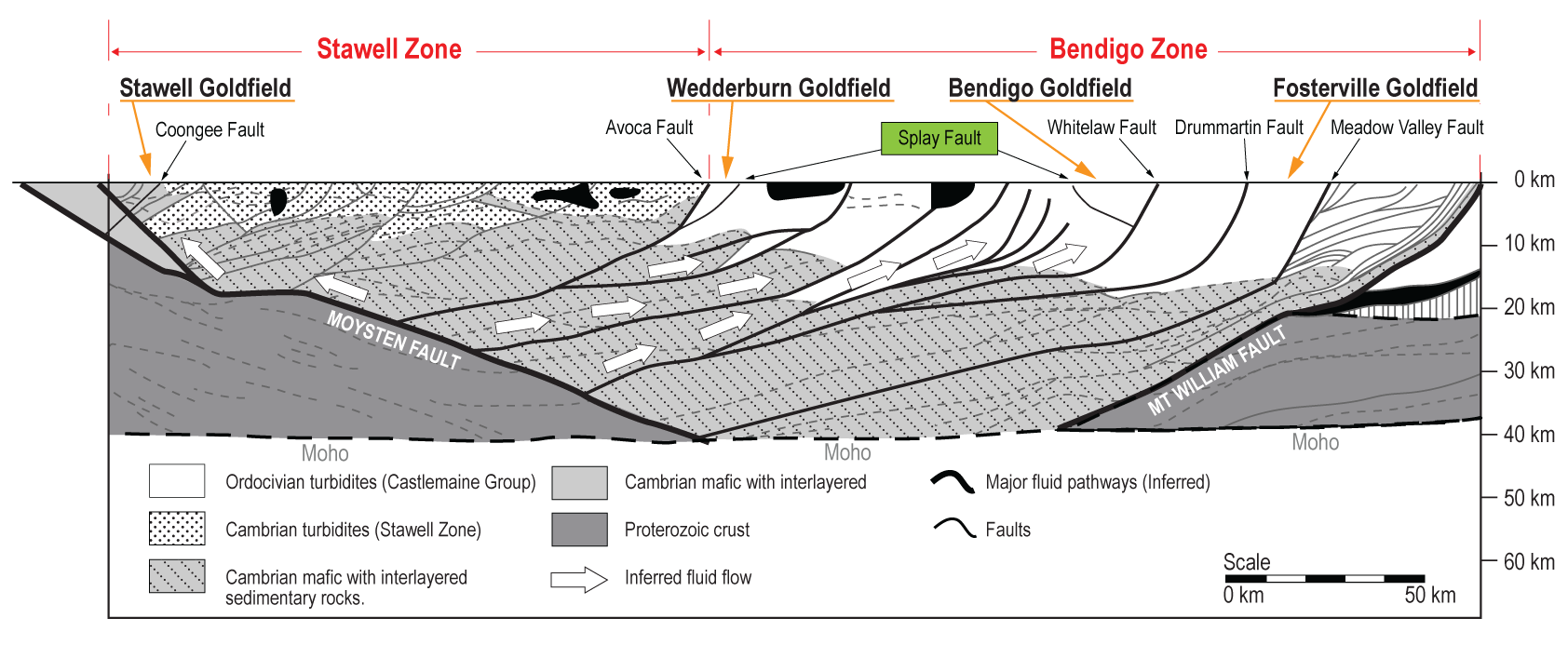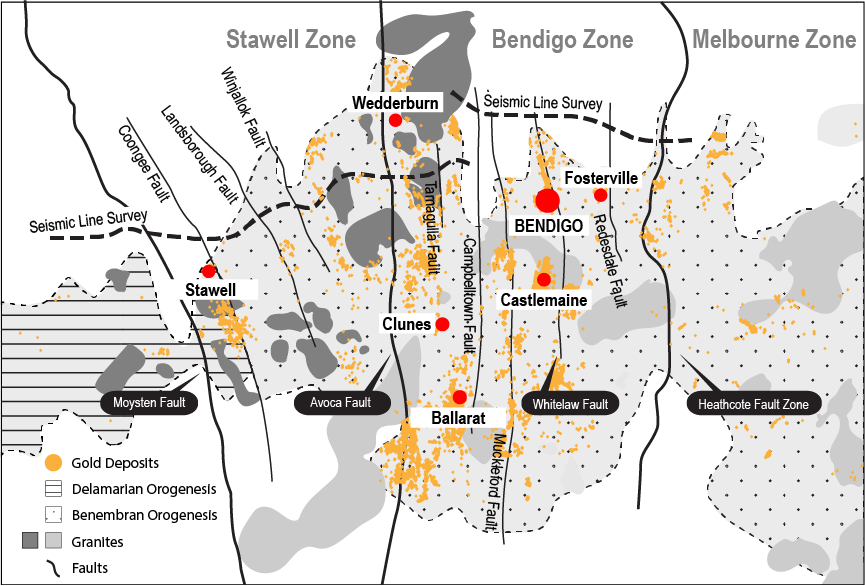Wedderburn Goldfield Geology
The Wedderburn Goldfield sits near the western margin of the Bendigo geological structural zone of Victoria. The Bendigo zone has the greatest gold production, totalling more than 60 million troy ounces, of all Victorian geological zones. It contains most of the state’s 7,000 historical gold mines in major mining centres such as Bendigo, Ballarat, Castlemaine and Clunes. It also hosts the significant modern gold production centre at Fosterville.
2006 Deep Seismic Survey
Wedderburn is in many ways typical of central Victorian gold deposits with comparable styles of mineralisation and structural controls.
Total estimated gold production in the Wedderburn district is 142,057 ozs from both alluvial (82%) and quartz vein (18%) sources – the majority of this was derived from within EL6302.
The stratigraphy beneath Wedderburn is best shown by the results of the 2006 deep seismic survey. The rocks in the upper crust are dominated by a sequence of marine sandstones and mudstones.
These metasedimentary rocks are known as the Castlemaine Group and overlie Cambrian mafic volcanics at depth.
In the videos below, geologist Clive Willman explains how dynamic geological processes resulted in the formation of Victoria’s goldfields, including Wedderburn’s.

Figure: Deep crustal structure of the Wedderburn Goldfield. Detail of seismic section line that passed 24 km south of Wedderburn in 2006. The Avoca Fault (AF) forms the western boundary of the Bendigo Zone. Narrow slices of Cambrian mafic volcanics were interpreted to lie high along the hangingwall of the Avoca Fault. Slices of mafic volcanics are also relatively high in the crust beneath the western Bendigo Zone at a depth of 2.5 secs two way time (approx 7.5 km).
The Castlemaine Group is the main host for orogenic gold mineralisation in the Bendigo Zone. The Stawell Zone, which lies immediately west of Wedderburn, has a very similar stratigraphy, but in the Stawell Zone the turbidites are Cambrian in age.
The Bendigo Zone was deformed by the Benambran Orogeny (~ 445 Ma) which caused all the turbidites to be folded and faulted and initiated a major influx of ‘orogenic’ gold mineralisation. Whereas the Castlemaine Group turbidites were deformed mainly by folding and faulting, the deeper mafic volcanics were deformed into a series of imbricated thrust slices (much like tilting books on a bookshelf).
So it is likely that crustal-scale faults focused gold-bearing fluids into the Wedderburn area during the main mineralising event (probably about 445 Ma).
The 2006 seismic survey revealed several large faults occur at depth in the western Bendigo Zone. One fault was inferred to splay from the footwall of the Avoca Fault into the area south of Wedderburn – this fault may be one of the fluid pathways that focused gold-bearing fluids into the vicinity of Wedderburn.

